- Home
- Larry Niven
Juggler of Worlds Page 6
Juggler of Worlds Read online
Page 6
“It’s been quiet for days,” she said.
Days of unexplained new behavior? Girard’s meds definitely needed a tweak. “Who have you informed?” he demanded. She named names, and Sigmund couldn’t argue, so he turned back to her holo. “The transfer-booth traffic looks about normal at the main spaceports.”
“Meeting incoming ships? They’re importers, Sigmund.” She blew on her fingernails. “Don’t you have Jinxians to watch?”
Behind him, people sniggered. Was no one working today? Sigmund suddenly knew it wasn’t only Newbie whose meds were too low. The ’docs had been dialed down. Without any threats on the horizon, why manufacture paranoia?
That’s just what Earth’s enemies wanted the ARM to think.
Maybe mother hunts weren’t the worst thing.
He kept studying the holo, ignoring the squad-room laughter. “Mojave Spaceport has a lull in visitors. Why is that?”
A hand came down heavily on his shoulder. Conan Murphy said, “Give it a rest, Sigmund. Let the woman do her job.”
Sigmund returned to his desk. The Jinxians had done nothing suspicious in the minutes he’d been gone. (Lying low, like the Puppeteers? In conspiracy with the Puppeteers?)
He leapt from his chair. To anyone in the room who might be listening, he explained, “Puppeteers are cowards. Who or what are they avoiding?”
No one answered—and no one laughed. He perched on a corner of Newbie’s desk. “Andrea, you say the Puppeteers are all in GP buildings. Now tell me what they’re doing.”
She couldn’t.
From what did Earth’s Puppeteers hide? Sigmund surfed the Net, looking for inspiration. Riots after the World Cup semifinals. A teleportation-system malfunction in Phoenix, some kind of a data-collection problem. The ongoing corruption scandal in the Beijing city council. Starving mountain lions had attacked a hiker camped on Mount Shasta. Celebrity gossip.
“What’s the extent of the transfer-booth outage?” Sigmund asked. Others had silently gathered to watch. Someone reached past him to call up a map. A blotchy area ebbed and flowed, amoeba-like: the time-lapse view of the service disruption. Sporadically, a pseudopod reached out to graze Mojave Spaceport.
Mojave was the only spaceport Puppeteers seemed to be avoiding. Because, cowards that they were, they shunned the area affected by the outage?
Things aren’t always what they seem. Were Puppeteers gathering in GP buildings? Were they avoiding Mojave Spaceport?
A sick conviction seized Sigmund. A data-collection malfunction needn’t mean the system couldn’t work. It was a billing problem—and, by extension, a problem with tracking people’s movements. Or Puppeteers’ movements. “Any unusual flight activity at Mojave in the last few days?”
General Products had long stored an unsold colony ship at Mojave. Like all modern colony ships, it used GP’s largest-model hull. Sigmund had seen #4s, and they were monsters, spheres a good third of a kilometer in diameter. A ship like that would carry a lot of Puppeteers. Every Puppeteer on Earth, perhaps? Boarded unseen through transfer booths?
The colony ship had taken off yesterday.
When inspectors began reporting back that GP buildings around the planet were empty, Sigmund wasn’t at all surprised.
MURMURS AND MUTTERS, intense whispers and heart-felt cussing, purposefully quick footsteps—all the sounds of a major investigation. Fear and dread gnawed at Sigmund’s gut.
He found the time to smile at Feather. They wouldn’t be sent on a mother hunt anytime soon.
10
The vastness commonly referred to as Known Space encompassed an approximate sphere of about 60 light-years in diameter.
To apply that description, known, took breathtaking hubris. Few solar systems in that enormous volume had ever been surveyed, much less settled. The gulfs between stars were, since the advent of hyperdrive, circumvented rather than traversed. Most of “Known Space” remained defiantly unknown—including, in a timely example, the location, presumably somewhere in the region, of the Puppeteer world or worlds.
To our ignorance, Sigmund mused, we can add a new mystery. All the Puppeteers who once visited the settled worlds of Known Space—worlds of all races, not only humans—had vanished. No one could say to where.
Jinx, abruptly, was no longer Sigmund’s designated worry. As the reports trickled in, sometimes unsolicited, as often triggered by Earth’s frantic hyperwave queries, ARM HQ had decreed the need for a special task force to investigate the Puppeteer disappearances.
And they had named Sigmund to direct it.
He’d reported as ordered to HQ in New York. His new office was barren, as ascetic as his black suit. He set the walls to window mode, and gazed out over Manhattan. Freighters clogged the harbor. Cargo planes filled the skies over the bustling megalopolis. It seemed normal, and yet—
A few klicks to the south, amid the tallest of Manhattan’s office towers, the biggest stock market in Sol system was imploding.
Sun glinted from the kilometers-tall spires of the financial community. People said that once you reached terminal velocity, the final seconds before impact were peaceful. No one could tell Sigmund how they knew that.
That wasn’t a constructive train of thought. He blanked the walls again, wondering where to start. Three-Vs droned in neighboring offices.
Across Known Space, slow-motion catastrophe unfolded. General Products had wiped out three races’ hull-production industries—and now GP was gone. Rebuilding the lost construction capacity would be the labor of years.
Economic crisis began with starship builders and interstellar cruise lines. It spread to their subcontractors and investors. And to all their employees, of course. Then to clothing stores, restaurants, realtors, utilities . . .
Soon enough, the pain would spread worlds wide.
In a sudden cascade, the 3-V murmurings blended into a louder and louder roar: news bots tuning in a breaking story. Sigmund had yet to download his preferences to the new office comp. He stuck his head into the hall. He couldn’t quite place the voice on the newscast.
“Come in, Ausfaller,” a neighbor said. She was a petite Eurasian woman with too many facial piercings and a fondness for blue.
Samantha? Selena? Sangeeta? Sigmund had met two dozen people that morning. At this point, he couldn’t remember anyone’s name. He nodded.
Some astronomical phenomenon occupied the holo. A nebula perhaps, but painfully bright and speckled with black.
“Will you look at those radiation readings,” Sangeeta(?) said. “It’s like the inside of a solar flare, and the ship is still thousands of light-years away from it. And listen to the cabin ventilation fans whine.”
Away from it. Away from what? Sigmund wondered. The voice he couldn’t quite place continued. “. . . Chain reaction of supernova events, long ago. Those dark motes are stars. They look black because they block the much hotter and brighter light streaming from behind.”
The corner logo read, in an ornate logo, JBC. The Jinx Broadcasting Company. Sigmund knew it well, long tracked by hyperwave. Was this a science show? An educational simulation? Why would something like that trigger significance filters here in ARM HQ?
“We’re fortunate to live a good twenty thousand light-years away. We wouldn’t even know, except for this truly amazing vessel.” A GP #4 hull replaced the glowing patch. At this small scale, machinery filled every bit of the transparent hull. “It embodies an experimental Puppeteer hyperdrive, capable of nearly a light-year every minute. I’ve returned the ship and made my report to General Products, my employers. Now I’m free to tell all of you.”
A light-year per minute! Sigmund was trying to grasp that when the crawler restarted at the bottom of the holo. The crawler began, “Galactic core explosion revealed!”
The galactic core had exploded?
Twenty thousand light-years. Had the Puppeteers fled a danger at least twenty thousand years into the future? And the JBC exclusive . . . why the connection with Jinx?
&n
bsp; The crawler inched along. “Only on JBC! Coming next: our exclusive interview with the pilot.” The holo cut to the pilot, the man whose voice was so familiar. His face was, too: a lean, pointy-chinned albino.
Sigmund shook with fear. Puppeteers. Jinx. And now—
The pilot was Beowulf Shaeffer.
11
Flee from danger. Gather for protection.
Pawing the floor, Nessus struggled to defy eons of instinct. In the days since the report of the core explosion, Citizens had evacuated Earth, as they had evacuated every other GP outpost. They sped, as fast as the escape vessels could carry them, to Hearth. There to flee again. . . .
Here on Earth he must remain, unable to gather or flee.
Nessus hid in one anonymous ship among hundreds on the tarmac at Outback Spaceport. Prying eyes could not see him through the paint that coated the interior of the impregnable hull. The air-lock hatch was fake, bonded to a seamless hull. Access was possible only by transfer booth—and then only if he chose to reconnect the booth to power. His fuel tanks held tritium and deuterium to capacity. Anyone calling would reach only the liveried butler persona to which his uncustomized human comm system defaulted. Given reserves, recycling, and synthesizers, he had air, water, and food more or less indefinitely.
Duty required him to stay. Logic called him safe.
Instinct demanded that he launch immediately and rejoin the herd, and if returning was impossible, to roll himself into a tight little ball of denial.
Instinct be damned. With a shudder of defiance, Nessus placed a call.
THE WAR ROOM hummed. Sigmund got names wrong half the time, and that was progress. He’d gotten Feather assigned to him, because she was good, and Andrea Girard so she could learn something. The rest of the task force were supposedly experts in Puppeteers or General Products technology or both; so far, he had only an ARM computer’s word for it.
Surmises lined the display walls, outnumbered by the open questions. Facts, beyond confirmations of the Puppeteers’ disappearance, were scarce. Holos flashed over desks. Comms trilled, chittered, and hummed. Knots of conversation formed and broke apart. Occasionally, the ventilation fans emerged from the din. They failed miserably at removing the smells of too many people. In a corner of the war room, two hulking strangers cowered before Feather’s wrath. Whatever task they had failed to perform to her satisfaction they would do better the next time. Feather was not someone you wanted angry at you.
Above everything hung an aura of dread.
Feather finished administering her tongue-lashing. As she headed his way, Sigmund’s pocket comp buzzed with the tooth-rattling buzz that meant he really needed to take the call. His AI assistant did the filtering.
“You should take this, Sigmund,” Medusa said. Snakes on her animated head hissed and coiled. His callers didn’t face a green-skinned gorgon, of course. They saw a primly coiffed woman named Georgia. “It’s a Puppeteer.”
Sigmund groaned. Since the United Nations had announced his task force, calls had streamed in by the thousands. All nutcases and cons of one sort or another, claiming to know the whereabouts of Puppeteers—or to be a Puppeteer. Every call had to be checked out—but not by him. At least the “Puppeteers” with booming basso voices could be disregarded. “I’m sure it’s a wonderful simulation, Medusa. Add it to the queue.”
“Bear with me.” Hiss. “Your caller said he met you on We Made It. The date checks out. And ‘he’ has a voice Feather would kill for.”
Feather reached Sigmund’s side. He ushered her to his office and shut the door.
Medusa transferred the call to desktop comm, tracking him through the security cameras. “He said his name is Nessus.” Hiss. “It’s a known Puppeteer name. It first appears in the Hal Clement records. That file has no images of him. The name ‘Nessus’ pops up regularly in our files for the past three years. The most recent instance is an ARM procurement visit to GP days before the disappearances. There’s surveillance imagery from that meeting, and the skin-tone patterns match your caller.”
Feather asked, “What’s the call trace say?”
Hissssss. “We can trace to Canaveral Spaceport. Triangulation from comm towers only tells us the area of the field. The call could come from any of dozens of vessels. That’s showing caution enough that I presume the call originates elsewhere.”
Sigmund knew the drill: cascaded anonymizer relays, using accounts opened with many-times-laundered funds. A Puppeteer in hiding would be that cautious. So would a knowledgeable impersonator.
“Most or all of them GP hulls, I presume,” Feather said. Medusa did not correct her.
Sigmund found himself pacing. It made sense. If a Puppeteer remained on Earth and chose to reveal himself, inside a GP hull was the safest place to be. But the very Puppeteer who had recovered the derelict at BVS-1? Sigmund shivered. “Put Nessus through.”
In an instant, a Puppeteer replaced Medusa—and the new image above the desk might have no more physical basis than the old. To animate an avatar was simple enough.
“Mr. Ausfaller,” the Puppeteer said. “You look different without the beard.”
That Wunderlander beard! He’d forgotten all about it. He had started growing it on the trip out and taken it off before arriving home. “You say we’ve met, Nessus.”
“A slight exaggeration to get past your AIde,” Nessus said. “We passed each other many times in the General Products building. We were never introduced.”
Sigmund floated a trial balloon. “I mostly worked with GP’s regional president for We Made It.”
Nessus made noises like glass breaking. “He was well above me in the company.”
“One moment.” Sigmund tapped the mute and blind buttons. “I did have a beard on We Made It. And the Puppeteer I worked with had a name like that. This could be real.”
“Assume it is,” Feather said. “What does he want?”
“Let’s find out.” Sigmund unfroze the call. “It seemed all Puppeteers left rather abruptly last week. Now you called. I have to wonder why.”
The Puppeteer took a one-head-high, one-head-low stance. The better to watch for danger? “I called, Sigmund Ausfaller, because you represent the UN’s response to our Exodus.
“I wish to arrange a private consultation with you.”
TINY SPYBOTS COVERED Sigmund; many more lined his pockets. Video, audio, global positioning, environmental—if something could be monitored and recorded in a compact manner, he carried sensors for it. He expected them to be jammed, but occasionally life dealt a pleasant surprise. Better to try and fail than to forever wonder.
“You don’t need to do this,” Feather said again. She smacked the transfer booth. “Step into a GP hull and you’ll get out only if Nessus permits it.”
Sigmund hardly needed help finding reasons to worry. “Every Puppeteer in Known Space has withdrawn or gone into hiding. It may well involve a danger to Earth. I can’t imagine it’s all been done so Nessus could harm me personally.” The funny thing was, he meant it. ARM training had refocused his paranoia. Before he could have second thoughts, he pressed the transmit button.
The glow panel in the destination booth switched off faster than he could exit. He was trapped! He stepped into what was clearly a cargo hold aboard a spaceship.
He had long marveled how expressions survived the centuries. A house divided against itself cannot stand. Catch-22. My brother’s keeper. Run out of steam. An overcrowded Earth had long ago eliminated cemeteries, and Sigmund had never seen one—
But suddenly, his skin crawling, he knew what it must mean to whistle past the graveyard.
His heart pounded. At ARM HQ it was easy to say the Puppeteers probably weren’t after him personally. It was still him personally here inside an impregnable spaceship, trapped and at the uncertain mercy of a hidden Puppeteer. He remembered Astyanax’s knife. . . .
A second transfer booth faced the one Sigmund had just vacated. As he watched, its interior lights activated. An opaque gl
ob masked the address display; he couldn’t budge the dried glue, or whatever it was, to read where this booth would send him. He walked in and pressed transmit.
Once more: A booth went dark. Dead.
Behind a transparent partition—GP hull material?—a Puppeteer waited. His skin was cream colored, with a few scattered tan patches. He was one of the scruffier ones Sigmund had ever seen, with little of the mane ornamentation that appeared to denote status. Strikingly, one eye was red, the other yellow. “Nessus, I presume.”
“Correct, Mr. Ausfaller. Thank you for coming.” The Puppeteer pointed with a briefly straightened neck: a chair. “Please make yourself comfortable.” The chair, the remotely deactivated transfer booth, and a standard synthesizer were the only furnishings.
“What if I brought a laser pistol?” In truth, he’d considered it. Any wall he could see through a laser pistol would shoot through—even hull material passed visible light. “Or am I talking to another holo, with all this staging to make me believe otherwise?”
Nessus quivered. “I’m quite real, I assure you. No doubt you carry comm gear. Please take a moment to satisfy yourself it’s been jammed.
“Although a scanner in the first ship revealed no weapons, you might have fooled it. If so, before you shoot anyone, consider that only I can reactivate your transfer booth. It is the single way out for you and whatever you hope to learn.”
Sigmund got a drink bulb of cold water from the synthesizer and sat. “I’m here to listen, no more. Why did you want to see me?”
MENTION OF A laser pistol made Nessus tremble. If he had kept any order to his mane, he’d have plucked it out now. “You have shown good faith in coming, Mr. Ausfaller.”
But for the departed snowy beard, Ausfaller was much as Nessus remembered. Short, middle-aged, and moonfaced. A bit thicker through the middle than four years earlier. He wore his hair natural: black, thick, and wavy. He still dressed in black, all the starker for his pale, undyed skin. An unimpressive specimen—until you saw those dark, dark eyes. Ausfaller’s gaze was intense. Piercing.

 The Integral Trees - Omnibus
The Integral Trees - Omnibus A World Out of Time
A World Out of Time Crashlander
Crashlander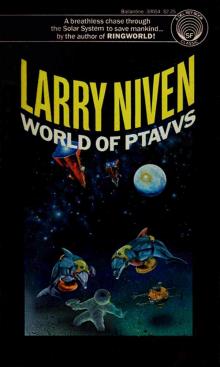 The World of Ptavvs
The World of Ptavvs Ringworld
Ringworld Juggler of Worlds
Juggler of Worlds The Ringworld Throne
The Ringworld Throne The Magic Goes Away Collection: The Magic Goes Away/The Magic May Return/More Magic
The Magic Goes Away Collection: The Magic Goes Away/The Magic May Return/More Magic A Gift From Earth
A Gift From Earth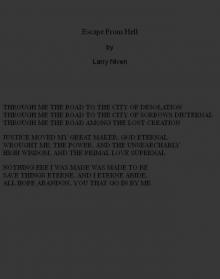 Escape From Hell
Escape From Hell Larry Niven’s Man-Kzin Wars - VII
Larry Niven’s Man-Kzin Wars - VII Rainbow Mars
Rainbow Mars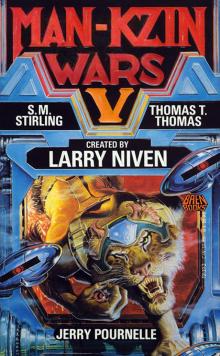 Larry Niven’s Man-Kzin Wars - V
Larry Niven’s Man-Kzin Wars - V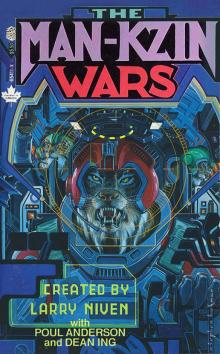 Larry Niven’s Man-Kzin Wars - I
Larry Niven’s Man-Kzin Wars - I Destroyer of Worlds
Destroyer of Worlds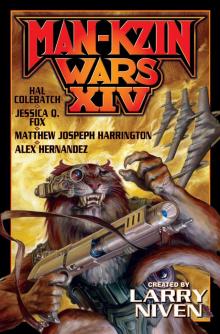 Man-Kzin Wars XIV
Man-Kzin Wars XIV Treasure Planet
Treasure Planet N-Space
N-Space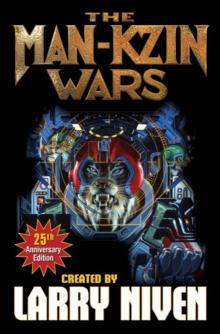 Man-Kzin Wars 25th Anniversary Edition
Man-Kzin Wars 25th Anniversary Edition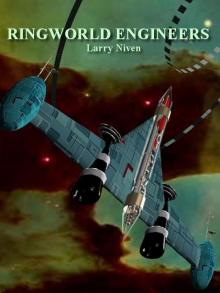 The Ringworld Engineers
The Ringworld Engineers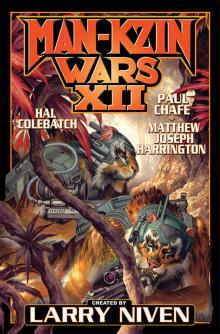 Larry Niven’s Man-Kzin Wars - XII
Larry Niven’s Man-Kzin Wars - XII The Magic May Return
The Magic May Return Tales of Known Space: The Universe of Larry Niven
Tales of Known Space: The Universe of Larry Niven The Magic Goes Away
The Magic Goes Away Larry Niven’s Man-Kzin Wars - III
Larry Niven’s Man-Kzin Wars - III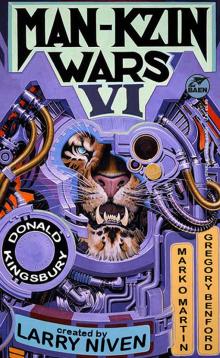 Larry Niven’s Man-Kzin Wars - VI
Larry Niven’s Man-Kzin Wars - VI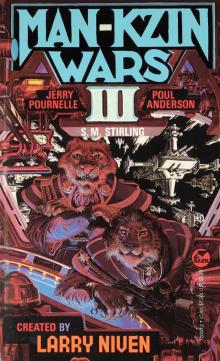 Man-Kzin Wars III
Man-Kzin Wars III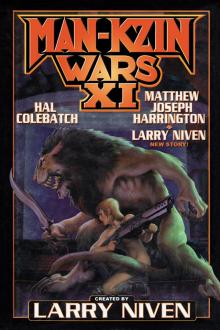 Larry Niven’s Man-Kzin Wars - XI
Larry Niven’s Man-Kzin Wars - XI Inferno
Inferno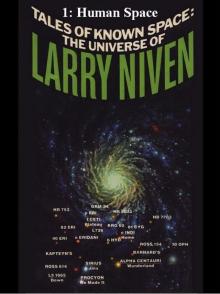 01-Human Space
01-Human Space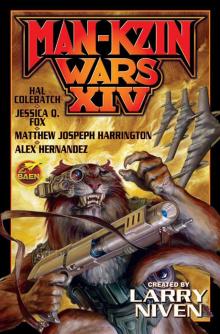 Larry Niven’s Man-Kzin Wars - XIV
Larry Niven’s Man-Kzin Wars - XIV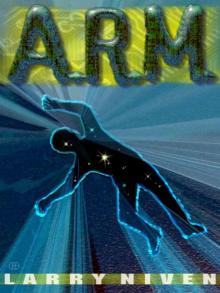 The Long Arm of Gil Hamilton
The Long Arm of Gil Hamilton Ringworld's Children
Ringworld's Children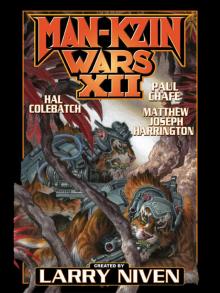 Man-Kzin Wars XII
Man-Kzin Wars XII Scatterbrain
Scatterbrain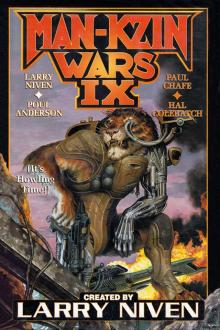 Man-Kzin Wars 9
Man-Kzin Wars 9 Man-Kzin Wars XIII
Man-Kzin Wars XIII Flatlander
Flatlander Man-Kzin Wars V
Man-Kzin Wars V Destiny's Forge
Destiny's Forge Scatterbrain (2003) SSC
Scatterbrain (2003) SSC The Time of the Warlock
The Time of the Warlock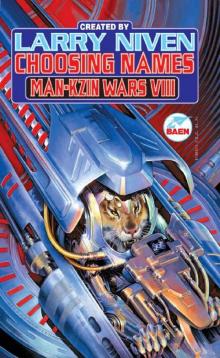 Choosing Names: Man-Kzin Wars VIII
Choosing Names: Man-Kzin Wars VIII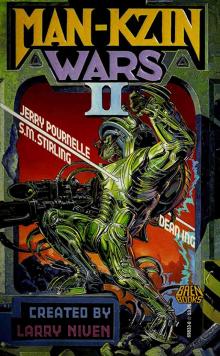 Larry Niven's Man-Kzin Wars II
Larry Niven's Man-Kzin Wars II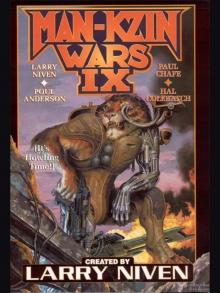 Man-Kzin Wars IX (Man-Kzin Wars Series Book 9)
Man-Kzin Wars IX (Man-Kzin Wars Series Book 9)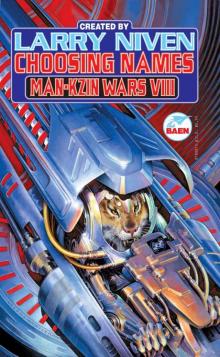 Choosing Names: Man-Kzin Wars VIII (Man-Kzin Wars Series Book 8)
Choosing Names: Man-Kzin Wars VIII (Man-Kzin Wars Series Book 8)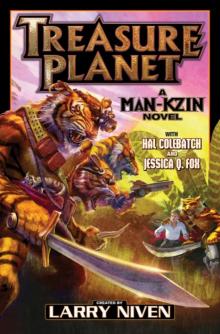 Treasure Planet - eARC
Treasure Planet - eARC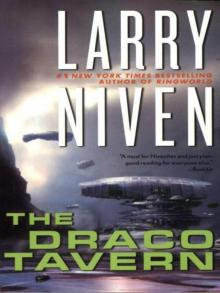 The Draco Tavern
The Draco Tavern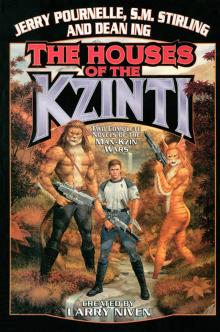 Larry Niven’s Man-Kzin Wars - The Houses of the Kzinti
Larry Niven’s Man-Kzin Wars - The Houses of the Kzinti The Fourth Profession
The Fourth Profession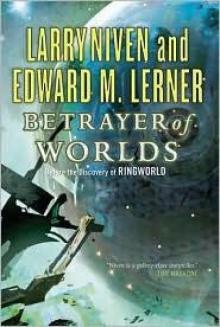 Betrayer of Worlds
Betrayer of Worlds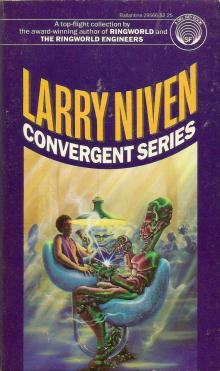 Convergent Series
Convergent Series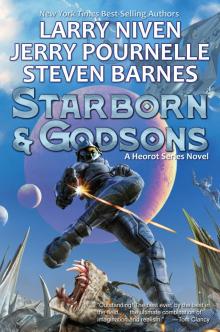 Starborn and Godsons
Starborn and Godsons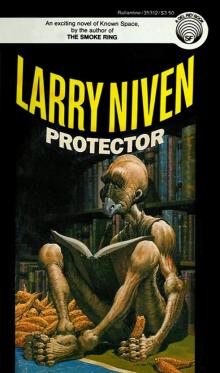 Protector
Protector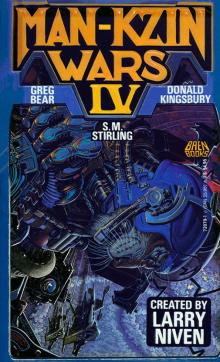 Larry Niven’s Man-Kzin Wars - IV
Larry Niven’s Man-Kzin Wars - IV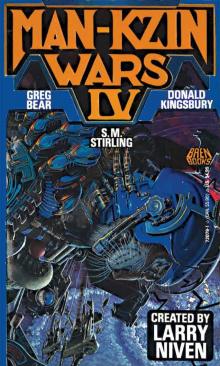 Man-Kzin Wars IV (Man-Kzin Wars Series Book 4)
Man-Kzin Wars IV (Man-Kzin Wars Series Book 4) The Legacy of Heorot
The Legacy of Heorot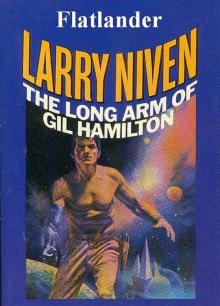 03-Flatlander
03-Flatlander Larry Niven’s Man-Kzin Wars - XIII
Larry Niven’s Man-Kzin Wars - XIII Destiny's Road
Destiny's Road Fate of Worlds
Fate of Worlds Beowulf's Children
Beowulf's Children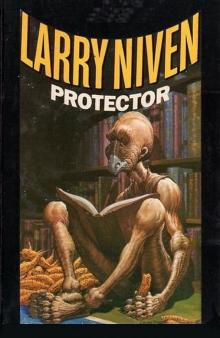 04-Protector
04-Protector The Flight of the Horse
The Flight of the Horse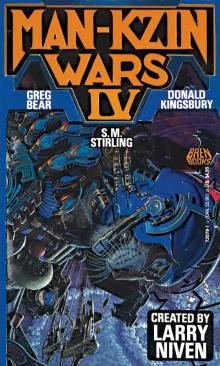 Man-Kzin Wars IV
Man-Kzin Wars IV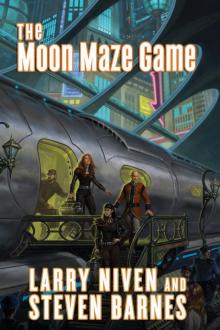 The Moon Maze Game dp-4
The Moon Maze Game dp-4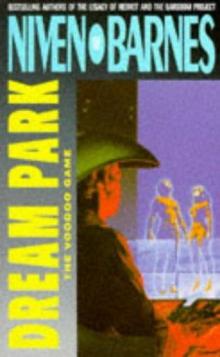 The California Voodoo Game dp-3
The California Voodoo Game dp-3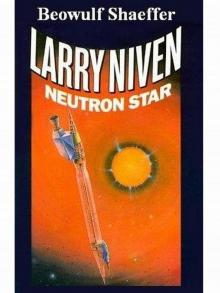 07-Beowulf Shaeffer
07-Beowulf Shaeffer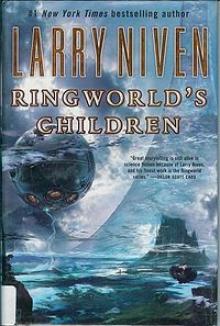 Ringworld's Children r-4
Ringworld's Children r-4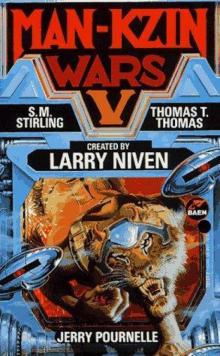 The Man-Kzin Wars 05
The Man-Kzin Wars 05 The Man-Kzin Wars 12
The Man-Kzin Wars 12 Lucifer's Hammer
Lucifer's Hammer The Seascape Tattoo
The Seascape Tattoo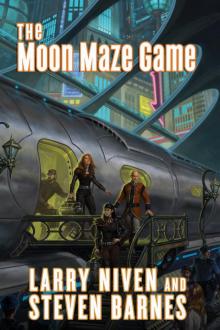 The Moon Maze Game
The Moon Maze Game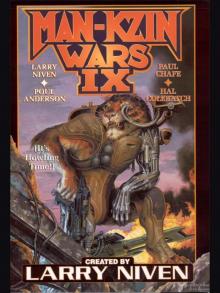 Man-Kzin Wars IX
Man-Kzin Wars IX All The Myriad Ways
All The Myriad Ways More Magic
More Magic 02-World of Ptavvs
02-World of Ptavvs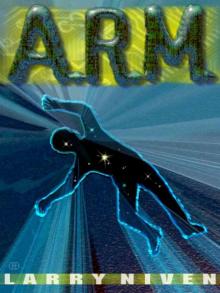 ARM
ARM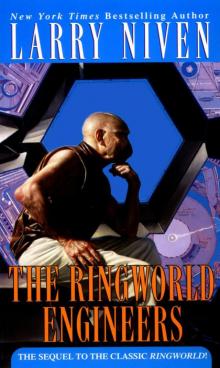 The Ringworld Engineers (ringworld)
The Ringworld Engineers (ringworld)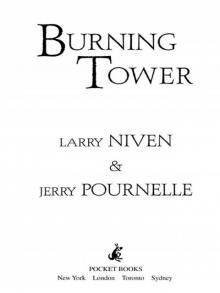 Burning Tower
Burning Tower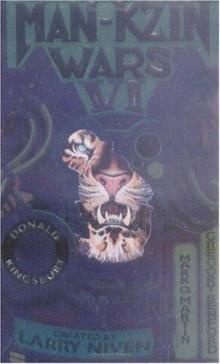 The Man-Kzin Wars 06
The Man-Kzin Wars 06 The Man-Kzin Wars 03
The Man-Kzin Wars 03 Man-Kzin Wars XIII-ARC
Man-Kzin Wars XIII-ARC The Hole Man
The Hole Man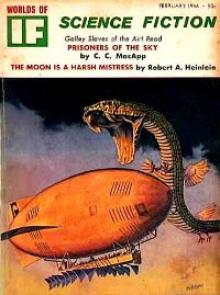 The Warriors mw-1
The Warriors mw-1 The Houses of the Kzinti
The Houses of the Kzinti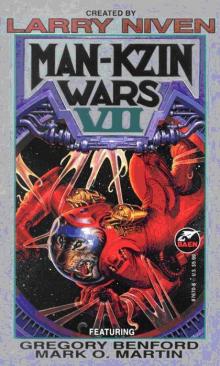 The Man-Kzin Wars 07
The Man-Kzin Wars 07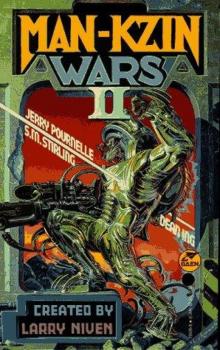 The Man-Kzin Wars 02
The Man-Kzin Wars 02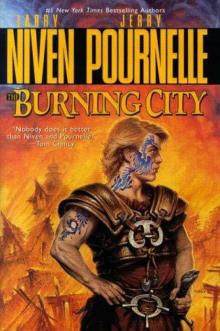 The Burning City
The Burning City At the Core
At the Core The Trellis
The Trellis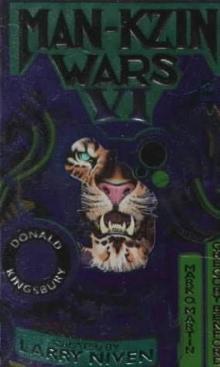 The Man-Kzin Wars 01 mw-1
The Man-Kzin Wars 01 mw-1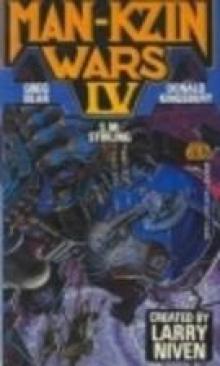 The Man-Kzin Wars 04
The Man-Kzin Wars 04 The Man-Kzin Wars 08 - Choosing Names
The Man-Kzin Wars 08 - Choosing Names Dream Park
Dream Park How the Heroes Die
How the Heroes Die Oath of Fealty
Oath of Fealty The Smoke Ring t-2
The Smoke Ring t-2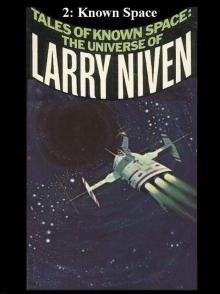 06-Known Space
06-Known Space Destiny's Road h-3
Destiny's Road h-3 Flash crowd
Flash crowd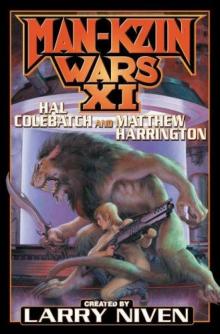 The Man-Kzin Wars 11
The Man-Kzin Wars 11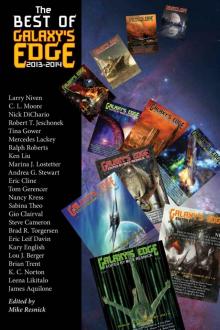 The Best of Galaxy’s Edge 2013-2014
The Best of Galaxy’s Edge 2013-2014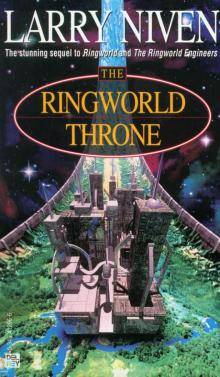 The Ringworld Throne r-3
The Ringworld Throne r-3 A Kind of Murder
A Kind of Murder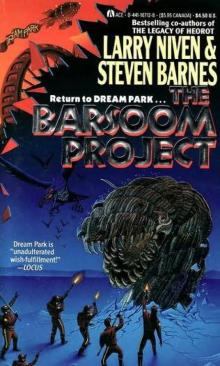 The Barsoom Project dp-2
The Barsoom Project dp-2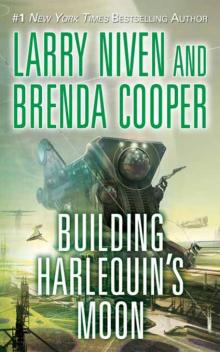 Building Harlequin’s Moon
Building Harlequin’s Moon The Gripping Hand
The Gripping Hand The Leagacy of Heorot
The Leagacy of Heorot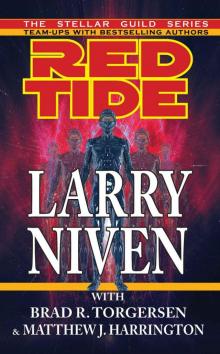 Red Tide
Red Tide Choosing Names mw-8
Choosing Names mw-8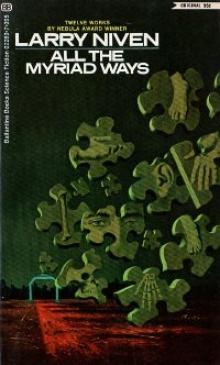 Inconstant Moon
Inconstant Moon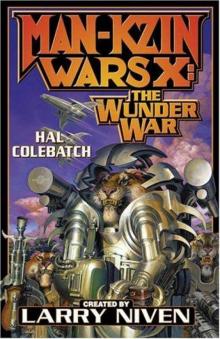 The Man-Kzin Wars 10 - The Wunder War
The Man-Kzin Wars 10 - The Wunder War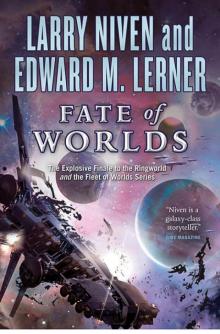 Fate of Worlds: Return From the Ringworld
Fate of Worlds: Return From the Ringworld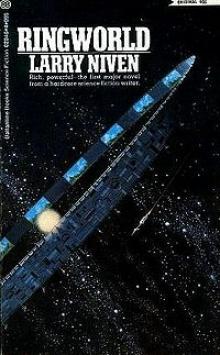 Ringworld r-1
Ringworld r-1 05-A Gift From Earth
05-A Gift From Earth The Integral Trees t-1
The Integral Trees t-1 Footfall
Footfall The Mote In God's Eye
The Mote In God's Eye Achilles choice
Achilles choice The Man-Kzin Wars 01
The Man-Kzin Wars 01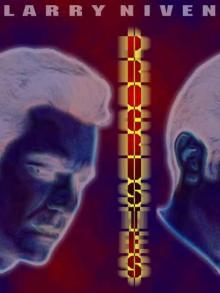 Procrustes
Procrustes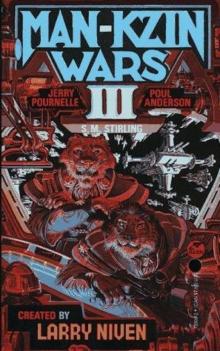 The Man-Kzin Wars 03 mw-3
The Man-Kzin Wars 03 mw-3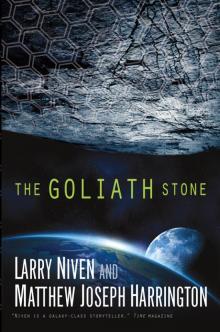 The Goliath Stone
The Goliath Stone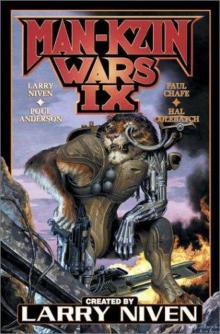 The Man-Kzin Wars 09
The Man-Kzin Wars 09